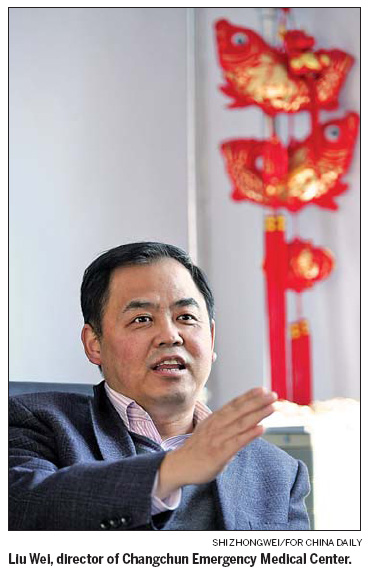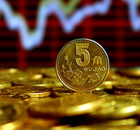Society
Getting there on time: Behind the '120' service
By He Na and Han Junhong (China Daily)
Updated: 2010-04-07 07:00
 |
Large Medium Small |
Fake ambulances

The majority of centers are also in urgent need of trained staff, with Beijing alone in need four times more workers, said a Beijing Times report. However, many health professionals are put off by the extreme pressure and poor wages. A paramedic earns up to 3,000 yuan ($440) a month.
"Almost all our medical staff suffer stomach problems because of long-term eating disorders," said Zhao Yunxiao, who workers at the Changchun Emergency Medical Center. "We need to be on the road within three minutes after a call, even if we are in the canteen. We often miss breakfast, lunch and dinner."
To be a "first responder" requires talent and excellent decision-making abilities, said Liu, who added those on the "first-aid frontline for four or five years are probably the most experienced medics" and deserve the respect afforded to hospital doctors.
"However, China doesn't have a promotion mechanism for first-aid medical staff, which greatly restrains the development of the industry. The Ministry of Health could increase the pay and recognize their professionalism, which would effectively prevent the outflow of talents," he said.
Although ambulances for 120 medical emergency centers - every city in China has one - are bought by the municipal government, daily running costs, maintenance and salaries are paid for by the center, explained Zhejiang eye specialist Yao.
Centers make money by charging patients for their services. They charge "rescue fees" of up to 80 yuan, and a ride to hospital in an ambulance costs about 2 yuan a kilometer (roughly the same as most taxis in China). They charge about 5 yuan for most injections or the use of an oxygen machine.
"Most 120 centers are actually losing money, though," said Yao.
The number of illegal ambulances on the road, which are both a danger to patients and the industry, have worsened the situation, warned Liu. "Besides a stretcher, these illegal ambulances often do not have vital medical equipment, nor professional staff, which puts patients in a vulnerable position and could even lead to more accidents."
He called for more regulations to establish a national standard, which would ensure all 120 staff wore the same uniforms and used the same equipment, like the police and fire rescue services.
Several cities have already tried to solve the problems of center finance and illegal ambulances with legislation, including Changchun, where regulations were introduced on March 1.
As well as changing the way centers charge customers and enhancing efforts to wipe out illegal ambulances, the new rules also make it a criminal offense to make hoax emergency calls, damage medical equipment or obstruct paramedics from helping a patient.
COST OF CARE
BEIJING - There is a 120 emergency medical center in every Chinese city. They usually have a centralized command and dispatch base staff ed with operators and technicians, which is connected to rescue stations across the city.
Once called to the scene of an emergency, paramedics off er patients fi rst aid and, if necessary, will transport them to an affi liated hospital, or a hospital chosen by the patient’s family. Few of the 120 emergency medical centers have their own hospitals. In most cities, 120 and hospitals are run as independent units.
Unlike the 110 police response, patients must pay after using 120 services. Here are some of the standard charges:
• Rescue by a fi rst-class ambulance (Mercedes-Benz and Louis Chevrolet): 5 yuan per kilometer
• In-car remedy: 40 yuan
• Rescue by imported ambulance (Toyota): 2.5 yuan per kilometer
• In-car remedy: 20 yuan
• Rescue by China-made ambulance: 2 yuan per kilometer
• In-car remedy: 10 yuan
• Hypodermic and muscle injection: 0.5 yuan
• Intravenous injection: 2 yuan
• Oxygen inhalation: 2.5 yuan per hour
• Cardiogram: 8 yuan
• Tracheotomy: 20 yuan
• Big rescue: 120 yuan per day
• Medium rescue: 80 yuan per day
• Small rescue: 40 yuan per day
• Waiting charge: 10 yuan per hour (after 30 minutes)
SOURCE: BEIJING EMERGENCY MEDICAL CENTER







